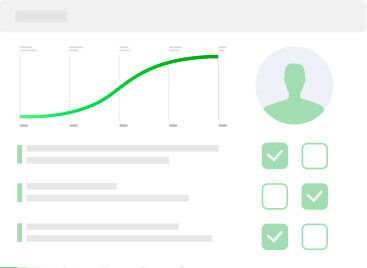English
- Swedish
- Romanian
- Greeke
- Polish
- Turkish
- Portuguese
- Italian
- Deutsch
- Spanish
- Franch
- Arabic
- Ukraine
- Russian
- No elements found. Consider changing the search query.
- List is empty.
Подключиться
Sign Up
Sign Up to leave comments faster, get updates for reviews or answers, join for our weekly newsletter.
Профайл
Sign In
Sign In to leave comments faster, get updates for reviews or answers, join for our weekly newsletter.
Michael Saunders
1
reviews
0
helpful votes
0
disagrees
Confronting Dyslipidemia: My Journey Through Diagnosis, Treatment, and Lifestyle Changes
When I first heard the term dyslipidemia, I was sitting in my doctor’s office, staring blankly at a wall chart filled with medical terms I didn’t understand. The word itself sounded foreign, and frankly, it didn’t mean much to me at the time. But as my doctor started explaining it, the reality of what it meant began to sink in.
Dyslipidemia is essentially an imbalance of lipids in your blood—things like cholesterol and triglycerides that, when out of whack, can lead to some serious health problems. I remember asking, “What does mixed dyslipidemia mean?” because that was the specific diagnosis I was given. The doctor explained that it’s a condition where several types of lipid abnormalities exist simultaneously, which, in my case, was contributing to the plaque buildup in my arteries.
I never really thought about how this could be connected to diabetes, but the doctor explained that dyslipidemia causes diabetes to become more complicated. Essentially, the lipid imbalances can exacerbate insulin resistance, making it even harder to control blood sugar levels. This was a wake-up call for me because diabetes runs in my family, and I knew I had to take this seriously.
Another thing that struck me was when the doctor mentioned atherogenic dyslipidemia—a type of dyslipidemia that’s particularly dangerous because it promotes the formation of plaques in the arteries. The treatment plan for this wasn’t just about taking a pill; it involved lifestyle changes, dietary adjustments, and a commitment to regular exercise. The atherogenic dyslipidemia treatment was going to be a long-term effort, not a quick fix.
As someone who didn’t grow up hearing these medical terms, I asked for clarification in simpler language. I even looked up dyslipidemia means in Hindi to better understand what I was dealing with. The more I learned, the more I realized how critical this was to my overall health. I also found myself diving into various medical abbreviations, like DLD, which stands for Dyslipidemia, and trying to make sense of what it all meant in the grand scheme of things.
The conversation with my doctor also touched on diabetic dyslipidemia, a specific type of lipid imbalance that’s common in people with diabetes. The definition of diabetic dyslipidemia includes high levels of triglycerides, low levels of HDL cholesterol (the “good” kind), and sometimes high levels of LDL cholesterol (the “bad” kind). My doctor explained that managing this would be crucial for preventing complications like heart disease.
One thing that surprised me was the connection between dyslipidemia and hypertension. I had always thought of high blood pressure as a separate issue, but it turns out that lipid imbalances can actually contribute to hypertension, further increasing the risk of cardiovascular events. The dyslipidemia causes hypertension link was something I hadn’t considered before, but it made sense given how interconnected these conditions are.
We also talked about familial dyslipidemia, a hereditary form of the condition that runs in families. The ICD-10 code for familial dyslipidemia helps doctors track and manage this condition in patients with a genetic predisposition. Knowing that this could be part of my family’s medical history added another layer to the importance of getting this under control.
The doctor went over the latest dyslipidemia guidelines for 2023, which emphasized a combination of lifestyle changes and medication to manage the condition. It wasn’t going to be easy, but the thought of the potential consequences—heart attacks, strokes, and more—was enough to motivate me.
As I left the doctor’s office, I couldn’t help but think about how much I had learned in such a short time. Terms like primary hyperlipidemia vs mixed dyslipidemia were no longer just jargon; they were critical to understanding what was happening in my body and how to fix it. I realized that dyslipidemia is dangerous, but it’s also something that can be managed with the right approach.
Over the next few weeks, I made some significant changes to my lifestyle. I started paying closer attention to my diet, cutting out foods high in saturated fats and incorporating more fruits, vegetables, and whole grains. I also made a commitment to exercise regularly, something I had neglected for far too long. The diabetic dyslipidemia treatment plan my doctor outlined included medication, but I knew that it was just one piece of the puzzle.
I even found myself researching dyslipidemia in Telugu and other languages, trying to fully grasp the condition from every angle. The more I understood, the more empowered I felt to take control of my health. I started using apps to track my cholesterol levels and blood pressure, making sure I stayed on top of my treatment plan.
Looking back, that initial diagnosis of dyslipidemia was a turning point. It forced me to confront some uncomfortable truths about my health, but it also gave me the tools I needed to make positive changes. I’m still on this journey, but I’m moving forward with a better understanding of what it takes to stay healthy—and that makes all the difference.
Согласен 32 Несогласен 2 2 years ago ![]()
Report reason
Your report successfully sent
Share this review
Share this review to draw more attention to opinion and get the brand's feedback faster
facebook
Twitter

Рассказать
Пожаловаться
Sign In
Sign In
Sign In to leave comments faster, get updates for reviews or answers, join for our weekly newsletter.


8.2
Excellent
№3 в категории SEMAGLUTIDE
DYSLIPIDEMIA
Dyslipidemia is a medical condition characterized by abnormal levels of lipids in the blood, such as cholesterol and triglycerides. The term dyslipidemia refers to a broad spectrum of lipid disorders, including elevated LDL cholesterol, low HDL cholesterol, and high triglycerides. These lipid imbalances can significantly increase the risk of cardiovascular diseases, making early diagnosis and management crucial.
In medical terms, dyslipidemia definition encompasses any deviation from normal lipid levels. This condition can be further categorized into specific types, such as mixed dyslipidemia, where there are multiple lipid abnormalities present. Mixed dyslipidemia definition often involves a combination of high LDL, low HDL, and elevated triglycerides, which collectively contribute to a higher risk of atherosclerosis and other cardiovascular conditions.
The ICD-10 code system is used by healthcare professionals to classify and document various health conditions, including dyslipidemia. For example, the dyslipidemia ICD-10 code provides a standardized way to record this condition in medical records, ensuring consistency in diagnosis and treatment. Similarly, mixed dyslipidemia ICD-10 and atherogenic hyperlipidemia ICD-10 codes help in categorizing these specific lipid disorders for accurate medical reporting.
Dyslipidemia is often associated with other health conditions, particularly diabetes. Diabetic dyslipidemia refers to the lipid abnormalities commonly seen in people with diabetes, such as elevated triglycerides and low HDL cholesterol. The ICD-10 code for dyslipidemia due to diabetes helps clinicians document this relationship, facilitating better treatment planning.
The dyslipidemia guidelines provide healthcare providers with recommendations on how to manage and treat this condition effectively. These guidelines are updated regularly to reflect the latest research and clinical practices. For instance, the CCS dyslipidemia guidelines and Canadian dyslipidemia guidelines offer region-specific advice on managing dyslipidemia in different populations. The dyslipidemia guidelines 2024 are expected to include the latest evidence-based strategies for treating dyslipidemia, emphasizing personalized approaches to therapy.
Understanding what is dyslipidemia in medical terms is essential for both patients and healthcare providers. Dyslipidemia means that there is an imbalance in the lipid levels in the blood, which can lead to plaque buildup in the arteries, increasing the risk of heart attack and stroke. The dyslipidemia diagnosis process typically involves blood tests to measure lipid levels, followed by a thorough assessment of the patient’s overall health and risk factors.
In some cases, dyslipidemia may be classified as atherogenic dyslipidemia, a condition where the lipid abnormalities specifically promote the formation of fatty deposits in the arteries. The ICD-10 code for atherogenic dyslipidemia helps in documenting this condition, ensuring that it is appropriately managed as part of a comprehensive cardiovascular risk reduction plan.
Patients with a history of dyslipidemia may be tracked using the ICD-10 code for history of dyslipidemia. This code is important for monitoring long-term outcomes and ensuring that ongoing treatment is effective. For those with more complex lipid disorders, such as dyslipidemia with hypertriglyceridemia, specific ICD-10 codes are used to document these conditions accurately.
In recent years, there has been growing interest in understanding the differences between hyperlipidemia vs dyslipidemia definition. While both terms refer to lipid abnormalities, dyslipidemia is a broader term that includes a wider range of lipid disorders. This distinction is important for accurate diagnosis and treatment.
For healthcare providers looking to stay updated on the latest developments in dyslipidemia management, resources such as what is dyslipidemia PDF documents and Canadian dyslipidemia guidelines 2023 offer valuable information. These resources provide insights into the most current treatment strategies, including lifestyle modifications and pharmacological interventions.
Overall, dyslipidemia is a significant health concern that requires careful management to reduce the risk of cardiovascular events. By following the latest guidelines and utilizing appropriate ICD-10 codes, healthcare providers can ensure that patients receive the best possible care.
Оставить отзыв
ask.direct
Выбирете месседжер через которым вам было бы удобно общаться
Ask.Direct соединит с несколькими из множество клиентов, которые готовые прямо сейчас помочь вам
Получите ответ от реальных клиентов через 15-30 секунд
Report a brand problem
Продукт DYSLIPIDEMIA пренадлежит компании
Вы владелец DYSLIPIDEMIA?
Коммуницируйте с потребителем и понимайте потребности своего клиента через инструменты компании PLUR
![canadian dyslipidemia guidelines]() canadian dyslipidemia guidelines
canadian dyslipidemia guidelines![dyslipidemia guidelines]() dyslipidemia guidelines
dyslipidemia guidelines![icd 10 code for dyslipidemia due to diabetes]() icd 10 code for dyslipidemia due to diabetes
icd 10 code for dyslipidemia due to diabetes![dyslipidemia definition medical]() dyslipidemia definition medical
dyslipidemia definition medical![dyslipidemia means]() dyslipidemia means
dyslipidemia means![ccs dyslipidemia guidelines]() ccs dyslipidemia guidelines
ccs dyslipidemia guidelines![icd 10 code for atherogenic dyslipidemia]() icd 10 code for atherogenic dyslipidemia
icd 10 code for atherogenic dyslipidemia![dyslipidemia icd 10 code]() dyslipidemia icd 10 code
dyslipidemia icd 10 code![what is dyslipidemia in medical terms]() what is dyslipidemia in medical terms
what is dyslipidemia in medical terms![mixed dyslipidemia icd 10 code]() mixed dyslipidemia icd 10 code
mixed dyslipidemia icd 10 code![icd 10 code for history of dyslipidemia]() icd 10 code for history of dyslipidemia
icd 10 code for history of dyslipidemia![dyslipidemia guidelines 2024]() dyslipidemia guidelines 2024
dyslipidemia guidelines 2024![dyslipidemia icd 10]() dyslipidemia icd 10
dyslipidemia icd 10![dm with dyslipidemia icd 10]() dm with dyslipidemia icd 10
dm with dyslipidemia icd 10![dyslipidemia definition]() dyslipidemia definition
dyslipidemia definition- semaglutide brand name
- semaglutide for weight loss in non diabetics dosage
- semaglutide brand name for weight loss
![κωδικός icd 10 για αθηρογενή δυσλιπιδαιμία]() κωδικός icd 10 για αθηρογενή δυσλιπιδαιμία
κωδικός icd 10 για αθηρογενή δυσλιπιδαιμία![pautas ccs dislipidemia]() pautas ccs dislipidemia
pautas ccs dislipidemia![medizinische definition von dyslipidämie]() medizinische definition von dyslipidämie
medizinische definition von dyslipidämie![dyslipidémie athérogène]() dyslipidémie athérogène
dyslipidémie athérogène![aterogen dyslipidemi]() aterogen dyslipidemi
aterogen dyslipidemi
Повысьте доверие к своему бренду и получите новых клиентов
20 000
Ask.Direct обращений
1 500 000
Просмотров страниц в месяц
13 000
Заполненных данных клиентов
7 000
Комментриев в месяц
15 000
Лайков комментариев в месяц

10 000
Опросов законченно

Увеличьте свою аудиторию, получите больше активных подписчиков
Привлекай аудитории используя мнения экспертов
Продвигаем вашу страницу вверх по репутационных брендовым запросам — бесплатно!
Привлекайте новых клиентовв свои социальные сети или каналы!
Отселживай статистику переходов по ссылке профиля и просмотров контента













